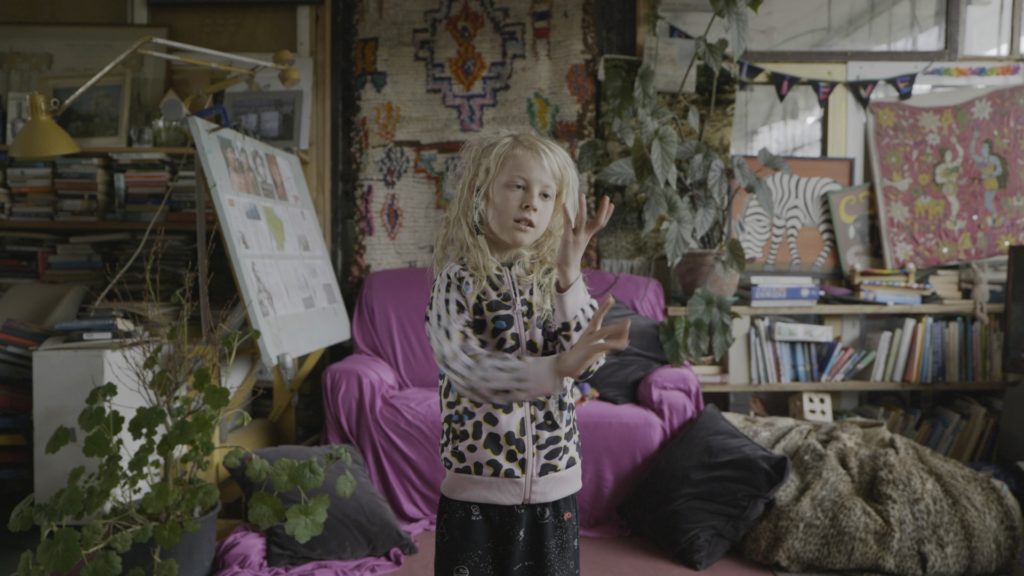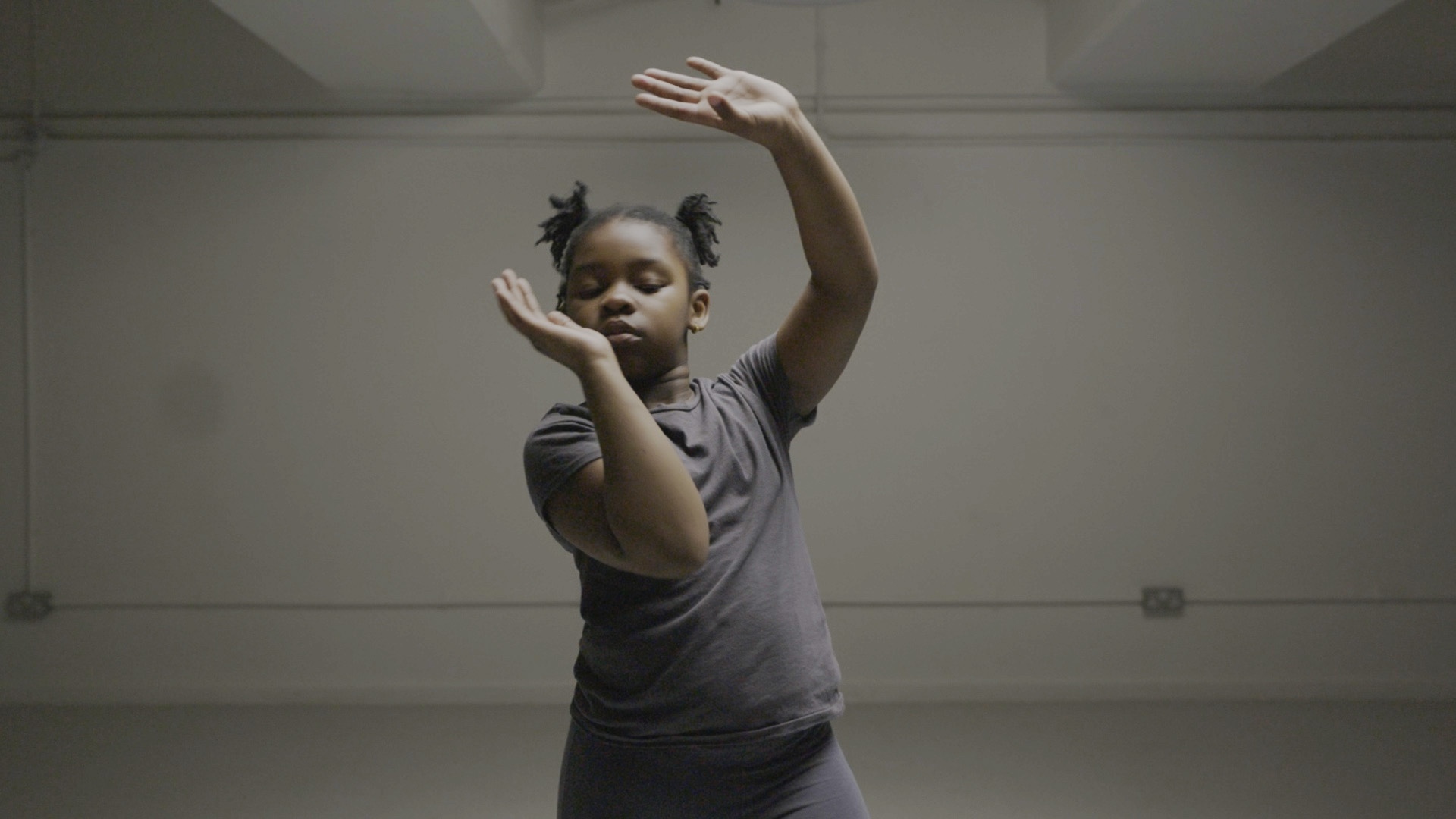Words by Qiao Lin Tan.
A product of dance workshops ran by Body Talks Movement CIC, The Body’s Voice is a video installation that shines a light on the inner, somatic worlds of children from London and Glastonbury. The performance space at The Iklectik consists of multiple large projector screens set up “in the round”, encircling the audience. The work starts off with voices of children answering the usual questions: “What do you like to do?” “How many people live in your house?” Scenes of the children in their domestic surroundings flash on different screens – shots of the exterior of what seems like a council estate, a beautiful Glastonbury countryside, the littered street outside a corner shop in London.
When these children appear, they are larger-than-life. Magnified on the two-meter tall screens, the usually-rib height children now have the ability to gaze back at me in the eye, face to face. The small size of children (coming from a childless 22-year-old writer) see them usually shrunk and simplified to me, vague outlines of human bodies and personhood. However, the films highlight details I never noticed in children – eyes gazing straight at me, fingers that skim across skin, that come in and out of focus as they wriggle and stretch and curl. One performer is wonderfully delicate and vulnerable, his fingers a feather light touch across his face and neck, exploring the ridges and landscapes of his own body with eyes closed in concentration. There is a maturity to these children’s somatic exploration, one that rivals many professional dancers.
Such calm, deeply somatic exploration gives way to anger. Percussive music is matched perfectly to the performers’ kicking and yelling, highlighting a raw, unfiltered sense of frustration and restlessness. A girl screams, her entire body coiled, head thrown back and eyes rolling. But this is not simply a child having an “episode” – I recognise the tension of it within my own body and feel a real sense of distress, one that should not be easily dismissed as simply a child “throwing a tantrum”.

The work had started off with the typical (infantilising?) questions posed towards children, but as it progresses, I discover these human beings that contain multitudes, that harbour their own individual, complex worlds. Beings that are hard to put into words, who are more than their initial answers of I like eating crisps with my brother. I live with my father, mother and sister. Or perhaps it is that simple. Perhaps it is as easy as “When I am angry/sad/sick, I dance and I feel good.” Following the moment of frustration, the performers twirl, shimmy and strike a pose without a care in the world. Just children dancing and enjoying themselves. One of them grooves with their shoulders, hips and knees, all awkward and clunky but so, so unabashedly happy.
Despite coming from different backgrounds (the racial and class divides between the children are quite clear from the shots of their surroundings), the children’s shared experience of movement is apparent – the physical embodiment of anger and happiness, and the retreat into the self during somatic exercises. The in-the-round format allows for the subversion of traditional audience/performer, adult/child dynamics by allowing the children to surround the audience and look inwards at us. However, I find it pertinent to mention (for those as prone to motion sickness as I am) that gazing at so many screens up close for half an hour did make the experience uncomfortable and dizzying at times. Regardless, I leave the space with a newfound respect and admiration for these children’s rich inner somatic worlds, a reminder than children are more knowledgable than we usually realise.
Header image by Oliver Schofield.
